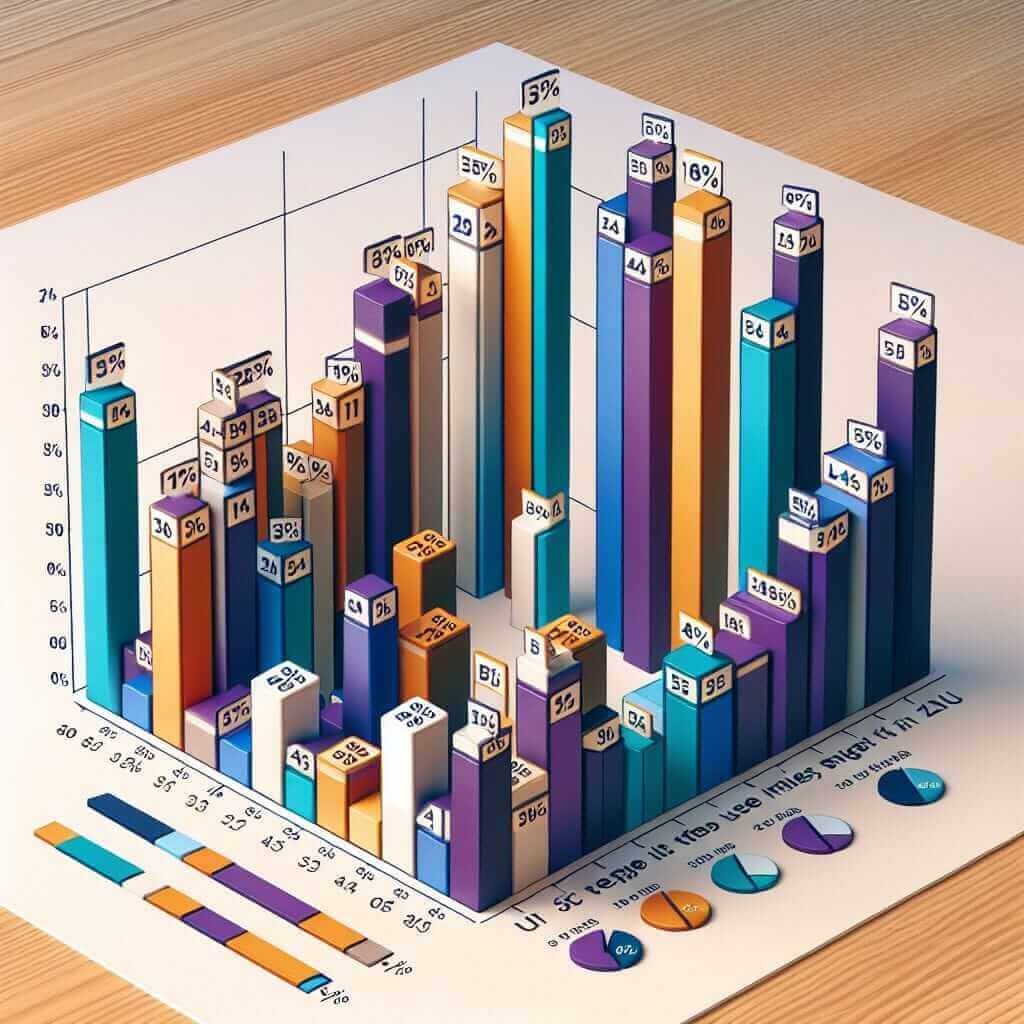Introduction: The Importance of Bar Charts in IELTS Writing Task 1
In the IELTS Writing Task 1 (Academic), understanding how to effectively analyze and write about visual data is crucial. Bar charts, representing data with rectangular bars of varying lengths, are a common format you might encounter. This guide will equip you with the skills to confidently tackle IELTS bar chart questions and achieve a high band score.
Understanding Bar Charts
Before delving into the writing process, let’s establish a clear understanding of bar charts and their components:
- Title: The title provides the context for the data presented.
- Axes: Typically, the horizontal (x-axis) displays categories, while the vertical (y-axis) shows the measured values.
- Bars: Each bar represents a specific category, and its length corresponds to the value it represents.
- Labels: Labels on the axes and bars clearly indicate what is being measured.
How to Write an Effective IELTS Bar Chart Essay
Writing about bar charts requires a structured approach. Here’s a step-by-step guide:
1. Analyze the Chart
- Identify the key features: What does the chart show? Note the title, axes labels, units of measurement, and any trends or significant differences.
- Group data: Look for patterns or relationships between the categories. Are there any similarities or contrasts that stand out?
2. Structure Your Essay
A well-structured essay is key to a good band score. Organize your response into four clear paragraphs:
- Paragraph 1: Introduction
- Paraphrase the information given in the chart title.
- State the type of chart and what it illustrates.
- Paragraph 2: Overview
- Summarize the main trends or patterns without going into specific details.
- Highlight the most significant features.
- Paragraph 3: Detailed Description
- Select the most important data points to describe.
- Use specific data to support your observations.
- Make comparisons between categories, highlighting any significant differences or similarities.
- Paragraph 4: Conclusion (optional)
- Briefly restate the main trend or your overall observation.
- Avoid introducing new information in the conclusion.
3. Use Appropriate Language and Vocabulary
- Accurate Data Representation: Use precise language to describe the data (e.g., “increased significantly,” “remained stable,” “experienced a slight decline”).
- Comparison and Contrast: Employ comparative and superlative forms (e.g., “higher than,” “the lowest proportion,” “twice as much as”).
- Tenses: Use appropriate tenses to reflect the time frame presented in the chart (e.g., past tense for past data, present tense for current data).
Example: Analyzing a Bar Chart
Let’s analyze a sample bar chart from a past IELTS exam:

Sample Essay:
The bar chart illustrates the percentage of people in different age groups who used the internet in the UK in 2010.
Overall, internet usage in 2010 was highest among younger age groups, with a significant decline observed as age increased. The youngest age group, 16-24 years old, showed the most frequent internet use, while the oldest age group, 65 and over, had the lowest proportion of internet users.
Nearly all (99%) of individuals aged 16 to 24 used the internet, indicating its near-universal adoption within this demographic. A similarly high percentage (91%) was observed for the 25-34 age group. However, internet usage gradually declined for older demographics. Just over half (52%) of people aged 55-64 used the internet, and this figure dropped significantly to 20% for the 65 and over age group.
(Conclusion is optional)
Tips for Success
- Practice Regularly: Familiarize yourself with different bar chart variations and practice writing essays within the time limit.
- Pay Attention to Detail: Accuracy in data interpretation and representation is crucial.
- Proofread Carefully: Check your grammar, spelling, and vocabulary before submitting.
Conclusion
Mastering the art of writing about bar charts requires practice and a keen eye for detail. By following the strategies outlined in this guide, you’ll be well-equipped to tackle IELTS bar chart questions with confidence and achieve your desired score. Remember, consistent effort and focused practice are key to excelling in your IELTS Writing Task 1.